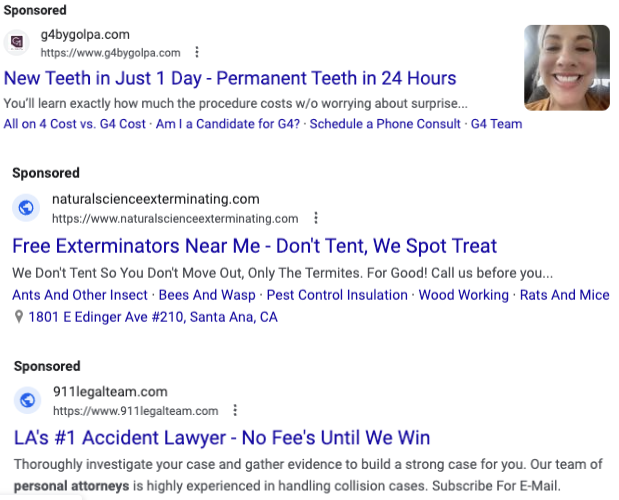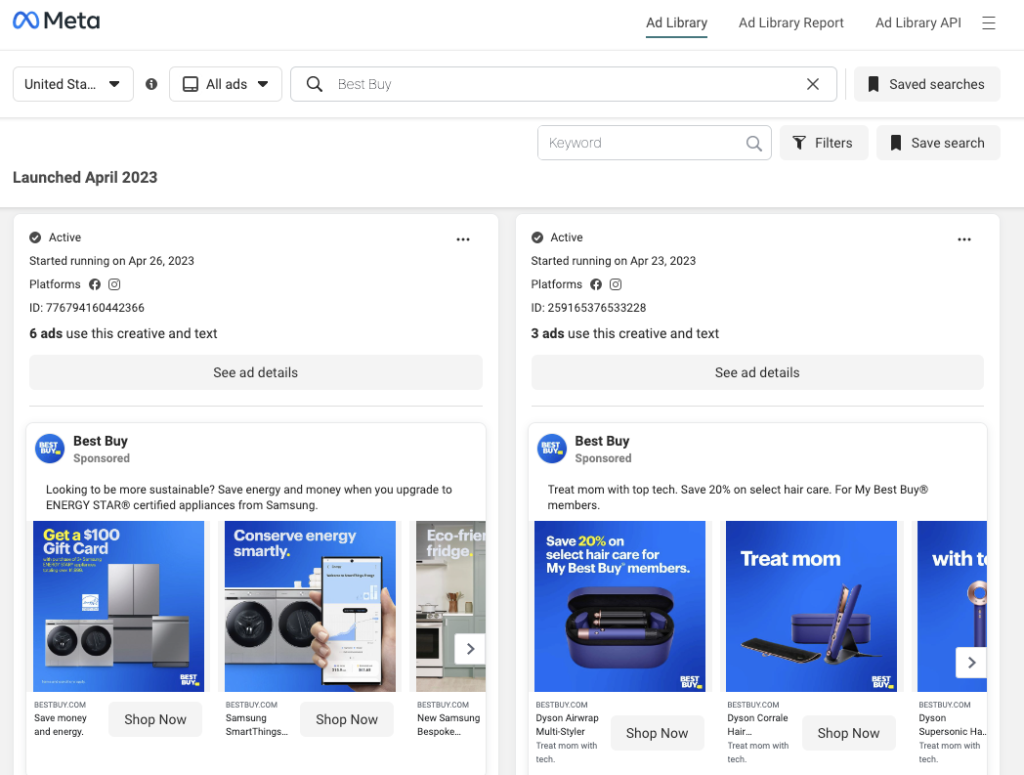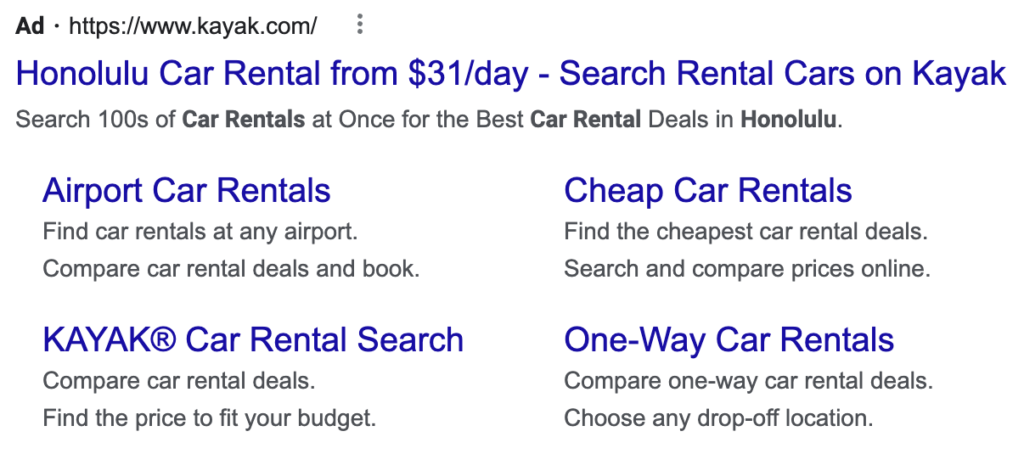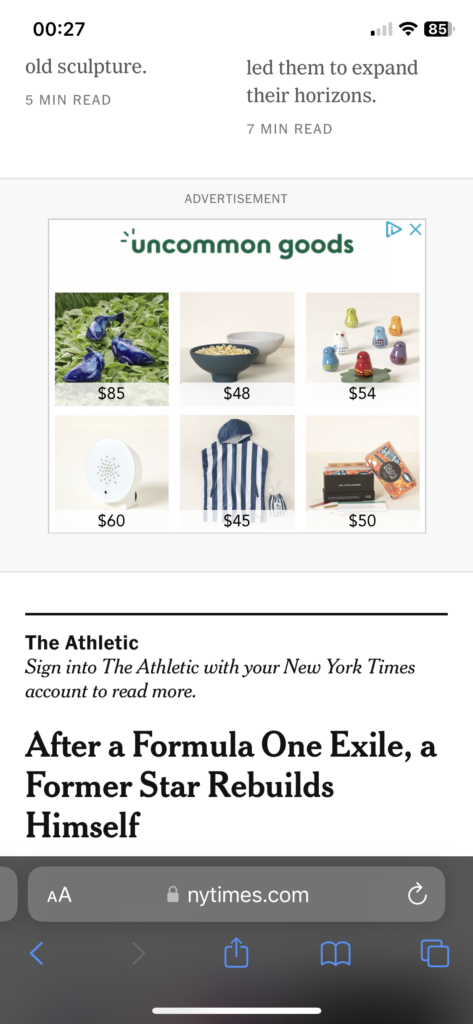The average click-through rate (CTR) for Google Ads is 1.91% for search ads, and 0.35% for display ads. For Facebook, the average CTR ranges from 1% to 1.32%.
If your click-through rates are higher than that, congratulations! If they’re lower, don’t despair. Read on for seven tips for improving your CTR (and conversion) rates on Facebook and Google Ads.
Sections
1. Confirm you’re going after the right keywords
People searching for informational keywords are still in the research stages, and may not be ready to buy just yet. For Google Ads, you want to be targeting keywords with commercial intent as these people who are ready to make a purchase. Branded and local keywords are also good options because these people are further down the marketing funnel, and are ready to make a purchase or appointment.
Pro Tip: For Google Ads, make sure your destination URL includes your primary keyword, reassuring searchers that your website has the information or products they’re seeking.
2. Add negative keywords
Adding negative keywords to your campaign is a Google Ads best practice. It’s your way of telling Google, “Please don’t show our ads for this keyword.”
Sometimes, negative keywords may seem relevant to your campaign, but they can actually lower your CTR or conversion rate. For example, a brand that exclusively sells women’s apparel wouldn’t want their ads to show for people searching for men’s clothing.
3. Review your ad copy
Is your ad copy selling people as well as it possibly could be? If not, it may be time to refresh your ad copy.
Make sure your ad copy is easy to read, emphasizes the right keywords, and, most importantly, makes people want to click. Appeal to people’s emotions or fear of missing out (FOMO), and highlight the value of what you’re offering. Use competitive research tools to check out what your competitors are doing. You may find some inspiration!
Take a look at the following search ads. All put their value proposition front and center, with a clever use of punctuation to make the ad easy to read.

4. Check your CTAs
It may seem obvious, but when you’re busy focusing on including all the right keywords, sometimes people forget to include a call-to-action (CTA). Don’t fall into this trap. Make sure all of your ads include a strong, clear CTA, such as Call Us Now.
5. Level up your visuals
As humans, we respond to visuals. Whether you’re improving your Facebook ads or your Google display ads, make sure your visual is as compelling as it can possibly be. The right visuals stand out in the news feed.
Again, competitive research tools can be helpful here. Head over to the Meta Ad Library and search for your competitor to see the ads they’re currently running:

6. Leverage ad extensions
Ad extensions not only expand the size of your Google search ad — making your ad more visible — but they offer an opportunity to include more keywords, appeal to discount-seeking behavior, or make it easier for a searcher to do something, like call you. For example…
Promotion extensions enable you to highlight a current sale and feature a promo code.

Location extensions let you add a street address, hours, and a clickable call button to your ads.

Sitelink extensions allow you to feature up to four additional web links in your ad.

7. Run remarketing campaigns
According to the marketing rule of 7 , it takes a consumer an average of seven times to see an ad before they take action.
So, skip ahead a step with a remarketing campaign that targets people who have already interacted with your brand. These can be particularly effective for recapturing abandoned carts. Use your Facebook ads and Google Display ads to feature the very products customers left behind, like this example from Uncommon Goods:

Improve your CTR and conversion rates with Your Marketing People
There are a number of things you can do to improve CTR and conversion rates of your Facebook and Google ads. The tips above are just skimming the surface.
For an expert look at what will work for your brand, contact Your Marketing People. From keyword research to split testing, our paid search experts know how to develop ad campaigns that meet your ROAS goals.







